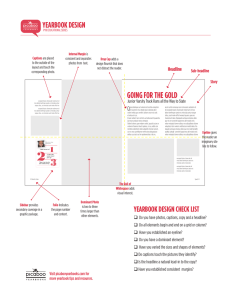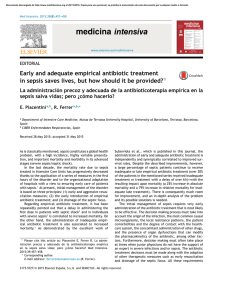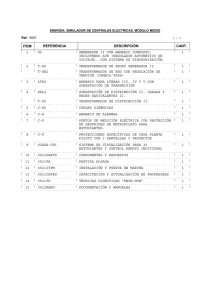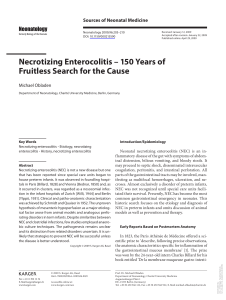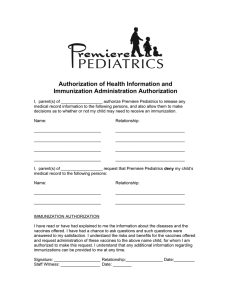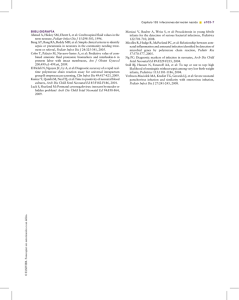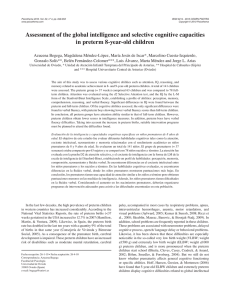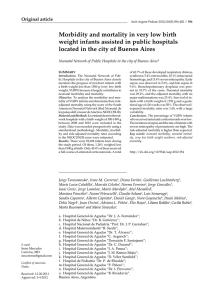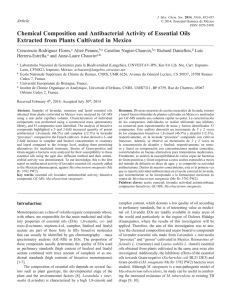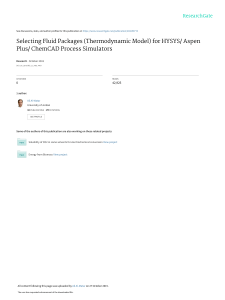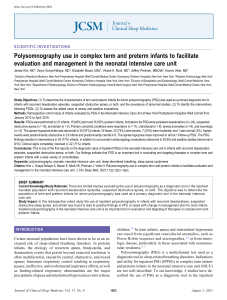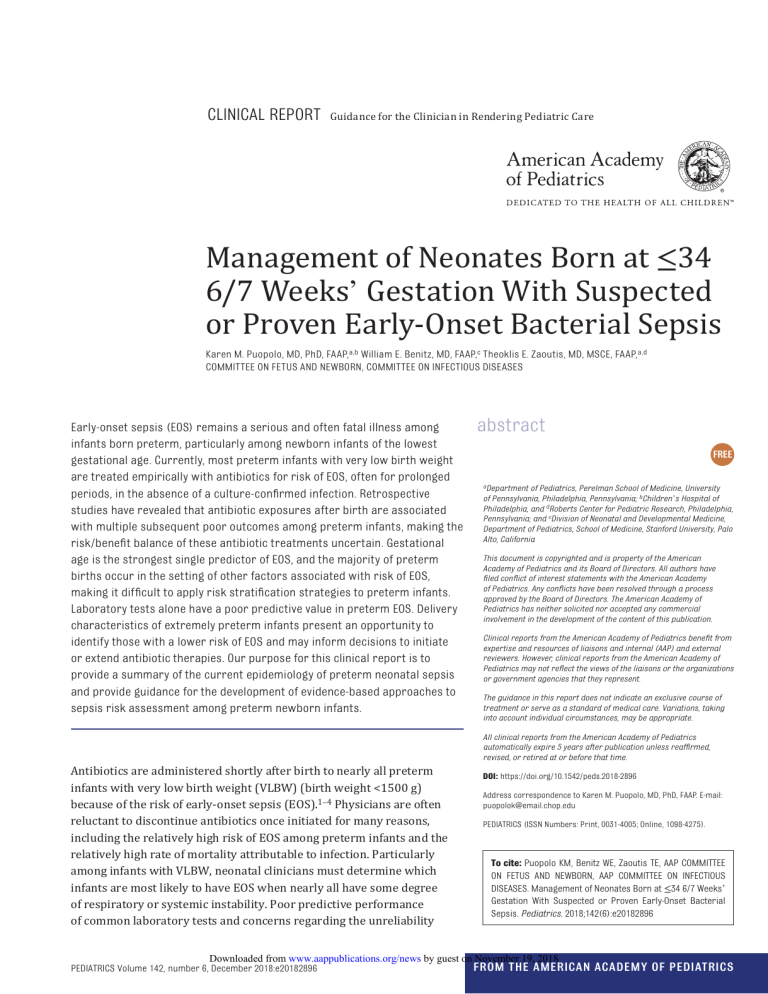
CLINICAL REPORT Guidance for the Clinician in Rendering Pediatric Care Management of Neonates Born at ≤34 6/7 Weeks’ Gestation With Suspected or Proven Early-Onset Bacterial Sepsis Karen M. Puopolo, MD, PhD, FAAP,a,b William E. Benitz, MD, FAAP,c Theoklis E. Zaoutis, MD, MSCE, FAAP,a,d COMMITTEE ON FETUS AND NEWBORN, COMMITTEE ON INFECTIOUS DISEASES Early-onset sepsis (EOS) remains a serious and often fatal illness among infants born preterm, particularly among newborn infants of the lowest gestational age. Currently, most preterm infants with very low birth weight are treated empirically with antibiotics for risk of EOS, often for prolonged periods, in the absence of a culture-confirmed infection. Retrospective studies have revealed that antibiotic exposures after birth are associated with multiple subsequent poor outcomes among preterm infants, making the risk/benefit balance of these antibiotic treatments uncertain. Gestational age is the strongest single predictor of EOS, and the majority of preterm births occur in the setting of other factors associated with risk of EOS, making it difficult to apply risk stratification strategies to preterm infants. Laboratory tests alone have a poor predictive value in preterm EOS. Delivery characteristics of extremely preterm infants present an opportunity to identify those with a lower risk of EOS and may inform decisions to initiate or extend antibiotic therapies. Our purpose for this clinical report is to provide a summary of the current epidemiology of preterm neonatal sepsis and provide guidance for the development of evidence-based approaches to sepsis risk assessment among preterm newborn infants. abstract aDepartment of Pediatrics, Perelman School of Medicine, University of Pennsylvania, Philadelphia, Pennsylvania; bChildren’s Hospital of Philadelphia, and dRoberts Center for Pediatric Research, Philadelphia, Pennsylvania; and cDivision of Neonatal and Developmental Medicine, Department of Pediatrics, School of Medicine, Stanford University, Palo Alto, California This document is copyrighted and is property of the American Academy of Pediatrics and its Board of Directors. All authors have filed conflict of interest statements with the American Academy of Pediatrics. Any conflicts have been resolved through a process approved by the Board of Directors. The American Academy of Pediatrics has neither solicited nor accepted any commercial involvement in the development of the content of this publication. Clinical reports from the American Academy of Pediatrics benefit from expertise and resources of liaisons and internal (AAP) and external reviewers. However, clinical reports from the American Academy of Pediatrics may not reflect the views of the liaisons or the organizations or government agencies that they represent. The guidance in this report does not indicate an exclusive course of treatment or serve as a standard of medical care. Variations, taking into account individual circumstances, may be appropriate. All clinical reports from the American Academy of Pediatrics automatically expire 5 years after publication unless reaffirmed, revised, or retired at or before that time. Antibiotics are administered shortly after birth to nearly all preterm infants with very low birth weight (VLBW) (birth weight <1500 g) because of the risk of early-onset sepsis (EOS).1– 4 Physicians are often reluctant to discontinue antibiotics once initiated for many reasons, including the relatively high risk of EOS among preterm infants and the relatively high rate of mortality attributable to infection. Particularly among infants with VLBW, neonatal clinicians must determine which infants are most likely to have EOS when nearly all have some degree of respiratory or systemic instability. Poor predictive performance of common laboratory tests and concerns regarding the unreliability DOI: https://doi.org/10.1542/peds.2018-2896 Address correspondence to Karen M. Puopolo, MD, PhD, FAAP. E-mail: [email protected] PEDIATRICS (ISSN Numbers: Print, 0031-4005; Online, 1098-4275). To cite: Puopolo KM, Benitz WE, Zaoutis TE, AAP COMMITTEE ON FETUS AND NEWBORN, AAP COMMITTEE ON INFECTIOUS DISEASES. Management of Neonates Born at ≤34 6/7 Weeks’ Gestation With Suspected or Proven Early-Onset Bacterial Sepsis. Pediatrics. 2018;142(6):e20182896 Downloaded from www.aappublications.org/news by guest on November 19, 2018 FROM THE AMERICAN PEDIATRICS Volume 142, number 6, December 2018:e20182896 ACADEMY OF PEDIATRICS of blood cultures add to the difficulty in discriminating at-risk infants. Because gestational age is the strongest predictor of EOS and approximately two-thirds of preterm births are associated with preterm labor, premature rupture of membranes (PROM), or clinical chorioamnionitis,5 risk stratification strategies cannot be applied to preterm newborn infants in the same manner as for term neonates. PATHOGENESIS AND CURRENT EPIDEMIOLOGY OF PRETERM NEONATAL EOS Preterm EOS is defined as a blood or cerebrospinal fluid (CSF) culture obtained within 72 hours after birth that is growing a pathogenic bacterial species. This microbiological definition stands in contrast to the functional definitions of sepsis used in pediatric and adult patients, for whom the definition is used to specify a series of time-sensitive interventions. The current overall incidence of EOS in the United States is approximately 0.8 cases per 1000 live births.6 A disproportionate number of cases occur among infants born preterm in a manner that is inversely proportional to gestational age at birth. The incidence of EOS is approximately 0.5 cases per 1000 infants born at ≥37 weeks’ gestation, compared with approximately 1 case per 1000 infants born at 34 to 36 weeks’ gestation, 6 cases per 1000 infants born at <34 weeks’ gestation, 20 cases per 1000 infants born at <29 weeks’ gestation, and 32 cases per 1000 infants born at 22 to 24 weeks’ gestation.6– 10 The incidence of EOS has declined among term infants over the past 25 years, a change attributed to the implementation of evidencebased intrapartum antimicrobial therapy. The impact of such therapies on preterm infants is less clear. Authors of the most recent studies report an EOS incidence among infants with VLBW ranging from 9 to 11 cases per 1000 infants with VLBW, 2 whereas studies from the early 1990s revealed rates of 19 to 32 per 1000 infants.10,11 Improvements among VLBW incidence may be limited to those born at older gestational ages. No significant change over time was observed in a study of 34 636 infants born from 1993 to 2012 at 22 to 28 weeks’ gestation, with the reported incidence ranging from 20.5 to 24.4 per 1000 infants.8 Morbidity and mortality from EOS remain substantial: 95% of preterm infants with EOS require neonatal intensive care for respiratory distress and/or blood pressure support, and 75% of deaths from EOS occur among infants with VLBW.6,10 The mortality rate among those with EOS is an order of magnitude higher among preterm compared with term infants, whether measured by gestational age (1.6% at ≥37 weeks, 30% at 25–28 weeks, and approximately 50% at 22–24 weeks)7,8, 10 or birth weight (3.5% among those born at ≥1500 g vs 35% for those born at <1500 g).6 The pathogenesis of preterm EOS is complex. EOS primarily begins in utero and was originally described as the “amniotic infection syndrome.”12,13 Among term infants, EOS pathogenesis most commonly develops during labor and involves ascending colonization and infection of the uterine compartment with maternal gastrointestinal and genitourinary flora, with subsequent colonization and invasive infection of the fetus and/or fetal aspiration of infected amniotic fluid. This intrapartum sequence may be responsible for EOS that develops after PROM or during preterm labor that is induced for maternal indications. However, the pathogenesis of preterm EOS likely begins before the onset of labor in many cases of preterm labor and/or PROM. Intraamniotic infection (IAI) may cause stillbirth in the second and third trimesters.14 In approximately 25% of cases, IAI is the cause of preterm labor and PROM, particularly when these occur at the lowest gestational ages; evidence suggests that microbial-induced maternal inflammation can initiate parturition and elicit fetal inflammatory responses.5,15– 18 Organisms isolated from the intrauterine compartment of women with preterm labor, PROM, or both are primarily vaginal in origin and include low-virulence species, such as Ureaplasma, as well as anaerobic species and wellrecognized neonatal pathogens, such as Escherichia coli and group B Streptococcus (GBS).16–18 The isolation of maternal oral flora and, more rarely, Listeria monocytogenes, suggests a transplacental pathway for some IAIs.16,18 –20 Inflammation inciting parturition may not, however, always be attributable to IAI. Inflammation resulting from immune-mediated rejection of the fetal or placental compartment (from maternal extrauterine infection), as well as that incited by reproductive or nonreproductive microbiota, may all contribute to the pathogenesis of preterm labor and PROM, complicating the interpretation of placental pathology.15,20 RISK FACTORS FOR PRETERM EOS Multiple clinical risk factors have been used to assess the risk of EOS among infants born at ≤34 6/7 weeks’ gestation. Univariate analyses of risk factors for EOS among preterm infants have been used to identify gestational age, birth weight, PROM and prolonged rupture of membranes (ROM), preterm onset of labor, maternal age and race, maternal intrapartum fever, mode of delivery, and administration of intrapartum antibiotics to be associated with risk of EOS; however, the independent contribution of any specific factor other than gestational age has been difficult to quantify. For example, among term infants, there is a linear relationship between the duration of ROM and the risk of EOS.9 Downloaded from www.aappublications.org/news by guest on November 19, 2018 FROM THE AMERICAN ACADEMY OF PEDIATRICS In contrast, the relationship between PROM and the risk of EOS is not simply described by its occurrence or duration but modified by gestational age as well as by the additional presence of clinical chorioamnionitis and the administration of latency and intrapartum antibiotics.17,21 – 24 These observations are likely related to uncertainty regarding the role of intrauterine infection and cervical structural defects in the pathogenesis of spontaneous PROM.24,25 The clinical diagnosis of chorioamnionitis has been used as a primary risk factor for identifying infants at risk for EOS. Most preterm infants with EOS are born to women with this clinical diagnosis.4,26 –29 The American College of Obstetricians and Gynecologists (ACOG) recently advocated for using the term “intraamniotic infection” rather than chorioamnionitis (which is primarily a histologic diagnosis) and published guidance for its diagnosis and management.30 A confirmed diagnosis of IAI is made by a positive result on an amniotic fluid Gram-stain, culture, or placental histopathology. Suspected IAI is diagnosed by maternal intrapartum fever (either a single documented maternal intrapartum temperature of ≥39.0°C or a temperature of 38.0–38.9°C that persists for >30 minutes) and 1 or more of the following: (1) maternal leukocytosis, (2) purulent cervical drainage, and (3) fetal tachycardia. The ACOG recommends that intrapartum antibiotics be administered whenever IAI is diagnosed or suspected and when otherwise unexplained maternal fever occurs during labor. Chorioamnionitis or IAI is strongly associated with EOS in preterm infants, with a number needed to treat of only 6 to 40 infants per case of confirmed EOS.4,26 – 29 Conversely, the absence of clinical and histologic chorioamnionitis may be used to identify a group of preterm infants who are at a lower risk for EOS. In a study of 15 318 infants born at 22 to 28 weeks’ gestation, those born by cesarean delivery with membrane rupture at delivery and without clinical chorioamnionitis were significantly less likely to have EOS or die before 12 hours of age.4 The number needed to treat for infants born in these circumstances was approximately 200; with the additional absence of histologic chorioamnionitis, the number needed to treat is approximately 380.4 Another study of 109 cases of EOS occurring among 5313 infants with VLBW over a 25-year period revealed that 97% of cases occurred in infants born with some combination of PROM, preterm labor, or concern for IAI.29 In that report, 2 cases of listeriosis occurred in the context of unexplained fetal distress in otherwise uncomplicated pregnancies. ANTIBIOTIC STEWARDSHIP IN PRETERM EOS MANAGEMENT Currently, most premature infants with VLBW are treated empirically with antibiotics for risk of EOS, often for prolonged periods, even in the absence of a culture-confirmed infection. Prolonged empirical antibiotics are administered to approximately 35% to 50% of infants with a low gestational age, with significant center-specific variation.1– 4 Antibiotic drugs are administered for many reasons, including the relatively high incidence of EOS among preterm infants, the relatively high rate of mortality attributable to infection, and the frequency of clinical instability after birth. Empirical antibiotics administered to very preterm infants in the first days after birth have been associated with an increased risk of subsequent poor outcomes.1,4, 31 – 33 One multicenter study of 4039 infants born from 1998 to 2001 with a birth weight of <1000 g revealed that those infants who died or had a diagnosis of necrotizing enterocolitis (NEC) before hospital discharge were significantly more likely to have received prolonged empirical antibiotic therapy in the first week after birth.1 The authors of the study estimated that the risk of NEC increased by 7% for each additional day of antibiotics administered in the absence of culture-confirmed EOS. Authors of a single-center study of infants with VLBW estimated that the risk of NEC increased by 20% for each additional day of antibiotics administered in the absence of a culture-confirmed infection.31 Authors of another study of 11 669 infants with VLBW assessed the overall rate of antibiotic use and found that higher rates during the first week after birth or during the entire hospitalization were both associated with increased mortality, even when adjusted for multiple predictors of neonatal morbidity and mortality.33 One concern in each of these studies is that some infants categorized as uninfected may in fact have suffered from EOS. Yet, even among 5640 infants born at 22 to 28 weeks’ gestation at a lower risk for EOS, those who received prolonged empirical antibiotic therapy during the first week after birth had higher rates of death and bronchopulmonary dysplasia.4 Several explanations are possible for all of these findings, including simply that physicians administer the most antibiotics to the sickest infants. Other potential mechanisms include the role of antibiotics in promoting dysbiosis of the gut, skin, and respiratory tract, affecting the interactions between colonizing flora in maintaining health and promoting immunity; it is also possible that antibiotics and dysbiosis function as modulators of vascular development.34,35 Although the full relationship between early neonatal antibiotic exposures and subsequent childhood health remains to be defined, current evidence suggests that such exposures do affect preterm infants. Physicians should consider Downloaded from www.aappublications.org/news by guest on November 19, 2018 PEDIATRICS Volume 142, number 6, December 2018 3 the risk/benefit balance of initiating antibiotic therapy for risk of EOS as well as for continuing empirical antibiotic therapy in the absence of a culture-confirmed infection. RISK CATEGORIZATION FOR PRETERM INFANTS Perhaps the greatest contributor to the nearly universal practice of empirical antibiotic administration to preterm infants is the uncertainty in EOS risk assessment. Because gestational age is the strongest predictor of EOS, and two-thirds of preterm births are associated with preterm labor, PROM, or clinical concern for intrauterine infection,5 risk stratification strategies cannot be applied to preterm infants in the same manner as for term neonates. In particular, the Neonatal Early-Onset Sepsis Risk Calculator does not apply to infants born before 34 0/7 weeks’ gestation.36 The objective of EOS risk assessment among preterm infants is, therefore, to determine which infants are at the lowest risk for infection and who, despite clinical instability, may be spared administration of empirical antibiotics. The circumstances of preterm birth may provide the best current approach to EOS management for preterm infants. Preterm Infants at Lower Risk for EOS Criteria for preterm infants to be considered at a lower risk for EOS include the following: (1) obstetric indications for preterm birth (such as maternal preeclampsia or other noninfectious medical illness or placental insufficiency), (2) birth by cesarean delivery, and (3) absence of labor, attempts to induce labor, or any ROM before delivery. Acceptable initial approaches to these infants might include (1) no laboratory evaluation and no empirical antibiotic therapy, or (2) a blood culture and clinical monitoring. For infants who do not improve after initial stabilization and/or those 4 who have severe systemic instability, the administration of empirical antibiotics may be reasonable but is not mandatory. Infants in this category who are born by vaginal or cesarean delivery after efforts to induce labor and/or ROM before delivery are subject to factors associated with the pathogenesis of EOS during delivery. If any concern for infection arises during the process of delivery, the infant should be managed as recommended below for preterm infants at a higher risk for EOS. Otherwise, an acceptable approach to these infants is to obtain a blood culture and to initiate antibiotic therapy for infants with respiratory and/or cardiovascular instability after birth. Preterm Infants at Higher Risk for EOS Infants born preterm because of cervical incompetence, preterm labor, PROM, chorioamnionitis or IAI, and/or acute and otherwise unexplained onset of nonreassuring fetal status are at the highest risk for EOS. In these cases, IAI may be the cause of preterm birth or a secondary complication of PROM and cervical dilatation. IAI may also be the cause of unexplained fetal distress. The most reasonable approach to these infants is to perform a blood culture and start empirical antibiotic treatment. Obtaining CSF for culture before the administration of antibiotics should be considered if the infant will tolerate the procedure and if it will not delay the initiation of antibiotic therapy. LABORATORY TESTING Blood Culture In the absence of validated, clinically available molecular diagnostic tests, a blood culture remains the diagnostic standard for EOS. Newborn surface cultures and gastric aspirate analysis cannot be used to diagnose EOS, and a urine culture is not indicated in sepsis evaluations performed at <72 hours of age. Modern blood culture systems use optimized enriched culture media with antimicrobial neutralization properties, continuous-read detection systems, and specialized pediatric culture bottles. Although concerns have been raised regarding incomplete detection of low-level bacteremia and the effects of intrapartum antibiotic administration,27,37 these systems reliably detect bacteremia at a level of 1 to 10 colony-forming units if a minimum of 1 mL of blood is inoculated; authors of several studies report no effect of intrapartum antibiotics on time to positivity.38– 42 Culture media containing antimicrobial neutralization elements efficiently neutralize β-lactam antibiotics and gentamicin.39 A median blood culture time to positivity <24 hours is reported among VLBW infants when using contemporary blood culture techniques.29,43– 46 Pediatric blood culture bottles generally require a minimum of 1 mL of blood for optimal recovery of organisms.47,48 The use of 2 separate bottles may provide the opportunity to determine if commensal species are true infections by comparing growth in the two.49,50 Use of 1 aerobic and 1 anaerobic culture bottle may optimize organism recovery. Most neonatal pathogens, including GBS, E coli, coagulase-negative Staphylococcus, and Staphylococcus aureus, will grow in anaerobic conditions. One study revealed that with routine use of both pediatric aerobic and adult anaerobic blood cultures, strict anaerobic species (primarily Bacteroides fragilis) were isolated in 16% of EOS cases in preterm infants with VLBW.29 An anaerobic blood culture is routinely performed among adult patients at risk for infection and can be used for neonatal blood cultures. Individual centers may benefit from collaborative discussion with the laboratory where cultures Downloaded from www.aappublications.org/news by guest on November 19, 2018 FROM THE AMERICAN ACADEMY OF PEDIATRICS are processed to optimize local processes. CSF Culture The incidence of meningitis is higher among preterm infants (approximately 0.7 cases per 1000 live births at 22–28 weeks’ gestation)4 compared with the incidence in the overall birth population (approximately 0.02–0.04 cases per 1000 live births).6,10 In the study of differential EOS risk among very preterm infants, meningitis did not occur at all among lower-risk preterm infants.4 The true incidence of meningitis among preterm infants may be underestimated because of the common practice of performing a lumbar puncture after the initiation of empirical antibiotic therapy. Although most preterm infants with culture-confirmed early-onset meningitis grow the same organism from blood cultures, the concordance is not 100%, and CSF cell count parameters may not always identify meningitis.51 If a CSF culture has not been obtained before the initiation of empirical antibiotics, physicians should balance the physiologic stability of the infant, the risk of EOS, and the potential harms associated with prolonged antibiotic therapy when making the decision to perform a lumbar puncture in preterm infants who are critically ill. White Blood Cell Count The white blood cell (WBC) count, differential (immature-to-total neutrophil ratio), and absolute neutrophil count are commonly used to assess risk of EOS. Multiple clinical factors can affect the WBC count and differential, including gestational age at birth, sex, and mode of delivery.52– 55 Fetal bone marrow depression attributable to maternal preeclampsia or placental insufficiency, as well as prolonged exposure to inflammatory signals (such as PROM), frequently result in abnormal values in the absence of infection. Most studies in which the performance characteristics of the complete blood cell (CBC) count in predicting infection is addressed have been focused on term infants. In 1 large multicenter study, the authors assessed the relationship between the WBC count and cultureconfirmed EOS and analyzed data separately for infants born at <34 weeks’ gestation.56 They found that all components of the CBC count lacked sensitivity for predicting EOS. The highest likelihood ratios (LRs) for EOS were associated with extreme values. A positive LR of >3 (ie, a likelihood of infection at least 3 times higher than the entire group of infants born at <34 weeks’ gestation) was associated with a WBC count of <1000 cells per μL, an absolute neutrophil count of <1000, and an immature-to-total neutrophil ratio of >0.25. A total WBC count of >50 000 cells per μL (LR, 2.3) and a platelet count of <50 000 (LR, 2.2) had a modest relationship to EOS. Other Inflammatory Markers Other markers of inflammation, including C-reactive protein (CRP), procalcitonin, interleukins (soluble interleukin 2 receptor, interleukin 6, and interleukin 8), tumor necrosis factor α, and CD64 are addressed in multiple studies.57– 60 Both CRP and procalcitonin concentrations increase in newborn infants in response to a variety of inflammatory stimuli, including infection, asphyxia, and pneumothorax. Procalcitonin concentrations also increase naturally over the first 24 to 36 hours after birth.60 Single values of CRP or procalcitonin obtained after birth to assess the risk of EOS are neither sufficiently sensitive nor specific to guide EOS care decisions. Consistently normal values of CRP and procalcitonin over the first 48 hours of age are associated with the absence of EOS, but serial abnormal values alone should not be used to extend antibiotic therapy in the absence of a culture-confirmed infection. TREATMENT OF PRETERM EOS The microbiology of EOS in the United States is largely unchanged over the past 10 years. Authors of national surveillance studies continue to identify E coli as the most common bacteria isolated in EOS cases that occur among preterm infants, whether defined by a gestational age of <34 weeks or by a birth weight of <1500 g. Overall, E coli is isolated in approximately 50%, and GBS is isolated in approximately 20% of all EOS cases occurring among infants born at <34 weeks’ gestation.6 Fungal organisms are isolated in <1% of cases. Approximately 10% of cases are caused by other Grampositive organisms (predominantly viridans group streptococci and enterococci), and approximately 20% of cases are caused by other Gram-negative organisms. S aureus (approximately 1%–2%) and L monocytogenes (approximately 1%) are uncommon causes of preterm EOS.4,6, 11 If an anaerobic culture is routinely performed, strict anaerobic bacteria are isolated in up to 15% of EOS cases among preterm infants with VLBW, with B fragilis being the predominant anaerobic species isolated.29 Ampicillin and gentamicin are the first choice for empirical therapy for EOS. This combination will be effective against GBS, most other streptococcal and enterococcal species, and L monocytogenes. Although two-thirds of E coli EOS isolates and most other Gramnegative EOS isolates are resistant to ampicillin, the majority remain sensitive to gentamicin.6 Extendedspectrum, β-lactamase-producing organisms are only rarely reported among EOS cases in the United States. Therefore, the routine empirical use of broader-spectrum antibiotics is not warranted and may be harmful.61 Downloaded from www.aappublications.org/news by guest on November 19, 2018 PEDIATRICS Volume 142, number 6, December 2018 5 Nonetheless, 1% to 2% of E coli cases were resistant to both ampicillin and gentamicin in recent surveillance studies by the Centers for Disease Control and Prevention, and B fragilis is not uniformly sensitive to these medications.6,62 Therefore, among preterm infants who are severely ill and at the highest risk for Gramnegative EOS (such as infants with VLBW born after prolonged PROM and infants exposed to prolonged courses of antepartum antibiotic therapy63– 65 ), the empirical addition of broader-spectrum antibiotic therapy may be considered until culture results are available. The choice of additional therapy should be guided by local antibiotic resistance data. When EOS is confirmed by a blood culture, a lumbar puncture should be performed if not previously done. Antibiotic therapy should use the narrowest spectrum of appropriate agents once antimicrobial sensitivities are known. The duration of therapy should be guided by expert references (eg, the American Academy of Pediatrics [AAP] Red Book: Report of the Committee on Infectious Diseases) and informed by the results of a CSF analysis and the achievement of sterile blood and CSF cultures. Consultation with infectious disease specialists should be considered for cases complicated by meningitis or other site-specific infections and for cases with complex antibiotic resistance patterns. When initial blood culture results are negative, antibiotic therapy should be discontinued by 36 to 48 hours of incubation, unless there is evidence of site-specific infection. Persistent cardiorespiratory instability is common among infants with VLBW and is not alone an indication for prolonged empirical antibiotic administration. Continuing empirical antibiotic administration in response to laboratory test abnormalities alone is rarely justified, particularly among preterm infants born in the setting of 6 maternal obstetric conditions known to affect fetal hematopoiesis. PREVENTION STRATEGIES The only proven preventive strategy for EOS is the appropriate administration of maternal intrapartum antibiotic prophylaxis. The most current recommendations from national organizations, such as the AAP, ACOG, and Centers for Disease Control and Prevention, should be followed for the administration of GBS intrapartum prophylaxis as well as for the administration of intrapartum antibiotic therapy when there is suspected or confirmed IAI. Neonatal practices are focused on the identification and empirical antibiotic treatment of preterm neonates at risk for EOS; these practices cannot prevent EOS. The empirical administration of intramuscular penicillin to all newborn infants to prevent neonatal, GBS-specific EOS is not justified and is not endorsed by the AAP. Neither GBS intrapartum antibiotic prophylaxis nor any neonatal EOS practice will prevent late-onset GBS infection or any other form of late-onset bacterial infection. Preterm infants are particularly susceptible to late-onset GBS infection, with approximately 40% of late-onset GBS cases occurring among infants born at ≤34 6/7 weeks’ gestation.66,67 SUMMARY POINTS 1. The epidemiology, microbiology, and pathogenesis of EOS differ substantially between term infants and preterm infants with VLBW. 2. Infants born at ≤34 6/7 weeks’ gestation can be categorized by level of risk for EOS by the circumstances of their preterm birth. ⚬⚬ Infants born preterm by cesarean delivery because of maternal noninfectious illness or placental insufficiency in the absence of labor, attempts to induce labor, or ROM before delivery are at a relatively low risk for EOS. Depending on the clinical condition of the neonate, physicians should consider the risk/benefit balance of an EOS evaluation and empirical antibiotic therapy. ⚬⚬ Infants born preterm because of maternal cervical incompetence, preterm labor, PROM, clinical concern for IAI, or acute onset of unexplained nonreassuring fetal status are at the highest risk for EOS. Such neonates should undergo EOS evaluation with a blood culture and empirical antibiotic treatment. ⚬⚬ Obstetric and neonatal care providers should communicate and document the circumstances of preterm birth to facilitate EOS risk assessment among preterm infants. 3. Clinical centers should consider the development of locally appropriate written guidelines for preterm EOS risk assessment and clinical management. After guidelines are implemented, ongoing surveillance, designed to identify low-frequency adverse events and affirm efficacy, is recommended. 4. The diagnosis of EOS is made by a blood or CSF culture. EOS cannot be diagnosed by laboratory tests alone, such as CBC count or CRP levels. 5. The combination of ampicillin and gentamicin is the most appropriate empirical antibiotic regimen for infants at risk for EOS. Empirical administration of additional broad-spectrum antibiotics may be indicated in preterm infants who are severely ill and at a high risk for EOS, particularly after prolonged antepartum maternal antibiotic treatment. Downloaded from www.aappublications.org/news by guest on November 19, 2018 FROM THE AMERICAN ACADEMY OF PEDIATRICS 6. When blood cultures are sterile, antibiotic therapy should be discontinued by 36 to 48 hours of incubation, unless there is clear evidence of site-specific infection. Persistent cardiorespiratory instability is common among preterm infants with VLBW and is not alone an indication for prolonged empirical antibiotic administration. Laboratory test abnormalities alone rarely justify prolonged empirical antibiotic administration, particularly among preterm infants at a lower risk for EOS. LEAD AUTHORS Karen M. Puopolo, MD, PhD, FAAP William E. Benitz, MD, FAAP Theoklis E. Zaoutis, MD, MSCE, FAAP COMMITTEE ON FETUS AND NEWBORN, 2017–2018 James Cummings, MD, Chairperson Sandra Juul, MD Ivan Hand, MD Eric Eichenwald, MD Brenda Poindexter, MD Dan L. Stewart, MD Susan W. Aucott, MD Karen M. Puopolo, MD, PhD, FAAP Jay P. Goldsmith, MD Kristi Watterberg, MD, Immediate Past Chairperson LIAISONS Kasper S. Wang, MD – American Academy of Pediatrics Section on Surgery Thierry Lacaze, MD – Canadian Paediatric Society Joseph Wax, MD – American College of Obstetricians and Gynecologists Tonse N.K. Raju, MD, DCH – National Institutes of Health Wanda Barfield, MD, MPH, CAPT USPHS – Centers for Disease Control and Prevention Erin Keels, MS, APRN, NNP-BC – National Association of Neonatal Nurses STAFF Jim Couto, MA COMMITTEE ON INFECTIOUS DISEASES, 2017–2018 Carrie L. Byington, MD, FAAP, Chairperson Yvonne A. Maldonado, MD, FAAP, Vice Chairperson Ritu Banerjee, MD, PhD, FAAP Elizabeth D. Barnett, MD, FAAP James D. Campbell, MD, MS, FAAP Jeffrey S. Gerber, MD, PhD, FAAP Ruth Lynfield, MD, FAAP Flor M. Munoz, MD, MSc, FAAP Dawn Nolt, MD, MPH, FAAP Ann-Christine Nyquist, MD, MSPH, FAAP Sean T. O’Leary, MD, MPH, FAAP Mobeen H. Rathore, MD, FAAP Mark H. Sawyer, MD, FAAP William J. Steinbach, MD, FAAP Tina Q. Tan, MD, FAAP Theoklis E. Zaoutis, MD, MSCE, FAAP EX OFFICIO David W. Kimberlin, MD, FAAP – Red Book Editor Michael T. Brady, MD, FAAP – Red Book Associate Editor Mary Anne Jackson, MD, FAAP – Red Book Associate Editor Sarah S. Long, MD, FAAP – Red Book Associate Editor Henry H. Bernstein, DO, MHCM, FAAP – Red Book Online Associate Editor H. Cody Meissner, MD, FAAP – Visual Red Book Associate Editor LIAISONS Amanda C. Cohn, MD, FAAP – Centers for Disease Control and Prevention Jamie Deseda-Tous, MD – Sociedad Latinoamericana de Infectología Pediátrica Karen M. Farizo, MD – US Food and Drug Administration Marc Fischer, MD, FAAP – Centers for Disease Control and Prevention Natasha Halasa, MD, MPH, FAAP – Pediatric Infectious Diseases Society Nicole Le Saux, MD – Canadian Pediatric Society Scot Moore, MD, FAAP – Committee on Practice Ambulatory Medicine Angela K. Shen, ScD, MPH – National Vaccine Program Office Neil S. Silverman, MD – American College of Obstetricians and Gynecologists James J. Stevermer, MD, MSPH, FAAFP – American Academy of Family Physicians Jeffrey R. Starke, MD, FAAP – American Thoracic Society Kay M. Tomashek, MD, MPH, DTM – National Institutes of Health STAFF Jennifer M. Frantz, MPH ABBREVIATIONS AAP: A merican Academy of Pediatrics ACOG: A merican College of Obstetricians and Gynecologists CBC: c omplete blood cell CRP: C -reactive protein CSF: c erebrospinal fluid EOS: early-onset sepsis GBS: group B Streptococcus IAI: intraamniotic infection LR: l ikelihood ratio NEC: n ecrotizing enterocolitis PROM: p remature rupture of membranes ROM: rupture of membranes VLBW: very low birth weight WBC: white blood cell Copyright © 2018 by the American Academy of Pediatrics FINANCIAL DISCLOSURE: The authors have indicated they have no financial relationships relevant to this article to disclose. FUNDING: No external funding. POTENTIAL CONFLICT OF INTEREST: The authors have indicated they have no potential conflicts of interest to disclose. COMPANION PAPER: A companion to this article can be found online at www.pediatrics.org/cgi/doi/10.1542/peds.2018-2894. REFERENCES 1.Cotten CM, Taylor S, Stoll B, et al; NICHD Neonatal Research Network. Prolonged duration of initial empirical antibiotic treatment is associated with increased rates of necrotizing enterocolitis and death for extremely low birth weight infants. Pediatrics. 2009;123(1):58–66 2.Cordero L, Ayers LW. Duration of empiric antibiotics for suspected early-onset sepsis in extremely low birth weight infants. Infect Control Hosp Epidemiol. 2003;24(9):662–666 3.Oliver EA, Reagan PB, Slaughter JL, Buhimschi CS, Buhimschi IA. Patterns of empiric antibiotic administration Downloaded from www.aappublications.org/news by guest on November 19, 2018 PEDIATRICS Volume 142, number 6, December 2018 7 for presumed early-onset neonatal sepsis in neonatal intensive care units in the United States. Am J Perinatol. 2017;34(7):640–647 4.Puopolo KM, Mukhopadhyay S, Hansen NI, et al; NICHD Neonatal Research Network. Identification of extremely premature infants at low risk for early-onset sepsis. Pediatrics. 2017;140(5):e20170925 5.Goldenberg RL, Culhane JF, Iams JD, Romero R. Epidemiology and causes of preterm birth. Lancet. 2008;371(9606):75–84 6.Schrag SJ, Farley MM, Petit S, et al. Epidemiology of invasive earlyonset neonatal sepsis, 2005 to 2014. Pediatrics. 2016;138(6):e20162013 7.Weston EJ, Pondo T, Lewis MM, et al. The burden of invasive early-onset neonatal sepsis in the United States, 2005-2008. Pediatr Infect Dis J. 2011;30(11):937–941 8.Stoll BJ, Hansen NI, Bell EF, et al; Eunice Kennedy Shriver National Institute of Child Health and Human Development Neonatal Research Network. Trends in care practices, morbidity, and mortality of extremely preterm neonates, 1993-2012. JAMA. 2015;314(10):1039–1051 9.Puopolo KM, Draper D, Wi S, et al. Estimating the probability of neonatal early-onset infection on the basis of maternal risk factors. Pediatrics. 2011;128(5). Available at: www.pediatrics. org/cgi/content/full/128/5/e1155 10.Stoll BJ, Hansen NI, Sánchez PJ, et al; Eunice Kennedy Shriver National Institute of Child Health and Human Development Neonatal Research Network. Early onset neonatal sepsis: the burden of group B streptococcal and E. coli disease continues. Pediatrics. 2011;127(5):817–826 11.Stoll BJ, Hansen NI, Higgins RD, et al; National Institute of Child Health and Human Development. Very low birth weight preterm infants with early onset neonatal sepsis: the predominance of gramnegative infections continues in the National Institute of Child Health and Human Development Neonatal Research Network, 2002-2003. Pediatr Infect Dis J. 2005;24(7):635–639 8 12.Benirschke K. Routes and types of infection in the fetus and the newborn. AMA J Dis Child. 1960;99(6):714–721 24.Parry S, Strauss JF III. Premature rupture of the fetal membranes. N Engl J Med. 1998;338(10):663–670 13.Blanc WA. Pathways of fetal and early neonatal infection. Viral placentitis, bacterial and fungal chorioamnionitis. J Pediatr. 1961;59:473–496 25.American College of Obstetricians and Gynecologists’ Committee on Practice Bulletins—Obstetrics. Practice bulletin no. 172: premature rupture of membranes. Obstet Gynecol. 2016;128(4):e165–e177 14.Goldenberg RL, McClure EM, Saleem S, Reddy UM. Infection-related stillbirths. Lancet. 2010;375(9724):1482–1490 15.Romero R, Dey SK, Fisher SJ. Preterm labor: one syndrome, many causes. Science. 2014;345(6198):760–765 16.Goldenberg RL, Hauth JC, Andrews WW. Intrauterine infection and preterm delivery. N Engl J Med. 2000;342(20):1500–1507 17.Carroll SG, Ville Y, Greenough A, et al. Preterm prelabour amniorrhexis: intrauterine infection and interval between membrane rupture and delivery. Arch Dis Child Fetal Neonatal Ed. 1995;72(1):F43–F46 18.Muglia LJ, Katz M. The enigma of spontaneous preterm birth. N Engl J Med. 2010;362(6):529–535 19.Lamont RF, Sobel J, Mazaki-Tovi S, et al. Listeriosis in human pregnancy: a systematic review. J Perinat Med. 2011;39(3):227–236 20.Vinturache AE, Gyamfi-Bannerman C, Hwang J, Mysorekar IU, Jacobsson B; Preterm Birth International Collaborative (PREBIC). Maternal microbiome - a pathway to preterm birth. Semin Fetal Neonatal Med. 2016;21(2):94–99 21.Hanke K, Hartz A, Manz M, et al; German Neonatal Network (GNN). Preterm prelabor rupture of membranes and outcome of verylow-birth-weight infants in the German Neonatal Network. PLoS One. 2015;10(4):e0122564 22.Ofman G, Vasco N, Cantey JB. Risk of early-onset sepsis following preterm, prolonged rupture of membranes with or without chorioamnionitis. Am J Perinatol. 2016;33(4):339–342 23.Dutta S, Reddy R, Sheikh S, Kalra J, Ray P, Narang A. Intrapartum antibiotics and risk factors for early onset sepsis. Arch Dis Child Fetal Neonatal Ed. 2010;95(2):F99–F103 26.Benitz WE, Gould JB, Druzin ML. Risk factors for early-onset group B streptococcal sepsis: estimation of odds ratios by critical literature review. Pediatrics. 1999;103(6). Available at: www.pediatrics.org/cgi/ content/full/103/6/e77 27.Higgins RD, Saade G, Polin RA, et al; Chorioamnionitis Workshop Participants. Evaluation and management of women and newborns with a maternal diagnosis of chorioamnionitis: summary of a workshop. Obstet Gynecol. 2016;127(3):426–436 28.Wortham JM, Hansen NI, Schrag SJ, et al; Eunice Kennedy Shriver NICHD Neonatal Research Network. Chorioamnionitis and culture-confirmed, early-onset neonatal infections. Pediatrics. 2016;137(1):e20152323 29.Mukhopadhyay S, Puopolo KM. Clinical and microbiologic characteristics of early-onset sepsis among very low birth weight infants: opportunities for antibiotic stewardship. Pediatr Infect Dis J. 2017;36(5):477–481 30.Committee on Obstetric Practice. Committee opinion no. 712: intrapartum management of intraamniotic infection. Obstet Gynecol. 2017;130(2):e95–e101 31.Alexander VN, Northrup V, Bizzarro MJ. Antibiotic exposure in the newborn intensive care unit and the risk of necrotizing enterocolitis. J Pediatr. 2011;159(3):392–397 32.Kuppala VS, Meinzen-Derr J, Morrow AL, Schibler KR. Prolonged initial empirical antibiotic treatment is associated with adverse outcomes in premature infants. J Pediatr. 2011;159(5):720–725 33.Ting JY, Synnes A, Roberts A, et al; Canadian Neonatal Network Investigators. Association between Downloaded from www.aappublications.org/news by guest on November 19, 2018 FROM THE AMERICAN ACADEMY OF PEDIATRICS antibiotic use and neonatal mortality and morbidities in very low-birthweight infants without cultureproven sepsis or necrotizing enterocolitis. JAMA Pediatr. 2016;170(12):1181–1187 34.Vangay P, Ward T, Gerber JS, Knights D. Antibiotics, pediatric dysbiosis, and disease. Cell Host Microbe. 2015;17(5):553–564 35.Kinlay S, Michel T, Leopold JA. The future of vascular biology and medicine. Circulation. 2016;133(25):2603–2609 36.Kaiser Permanente Division of Research. Neonatal early-onset sepsis calculator. Available at: https://neonatalsepsiscalculator. kaiserpermanente.org. Accessed April 5, 2018 37.Wynn JL, Wong HR, Shanley TP, Bizzarro MJ, Saiman L, Polin RA. Time for a neonatal-specific consensus definition for sepsis. Pediatr Crit Care Med. 2014;15(6):523–528 38.Dunne WM Jr, Case LK, Isgriggs L, Lublin DM. In-house validation of the BACTEC 9240 blood culture system for detection of bacterial contamination in platelet concentrates. Transfusion. 2005;45(7):1138–1142 39.Flayhart D, Borek AP, Wakefield T, Dick J, Carroll KC. Comparison of BACTEC PLUS blood culture media to BacT/Alert FA blood culture media for detection of bacterial pathogens in samples containing therapeutic levels of antibiotics. J Clin Microbiol. 2007;45(3):816–821 quality control testing of platelet units. J Clin Microbiol. 2009;47(3):817–818 values for neutrophilic cells. J Pediatr. 1979;95(1):89–98 43.Garcia-Prats JA, Cooper TR, Schneider VF, Stager CE, Hansen TN. Rapid detection of microorganisms in blood cultures of newborn infants utilizing an automated blood culture system. Pediatrics. 2000;105(3 pt 1):523–527 53.Schmutz N, Henry E, Jopling J, Christensen RD. Expected ranges for blood neutrophil concentrations of neonates: the Manroe and Mouzinho charts revisited. J Perinatol. 2008;28(4):275–281 44.Sarkar SS, Bhagat I, Bhatt-Mehta V, Sarkar S. Does maternal intrapartum antibiotic treatment prolong the incubation time required for blood cultures to become positive for infants with early-onset sepsis? Am J Perinatol. 2015;32(4):357–362 54.Christensen RD, Henry E, Jopling J, Wiedmeier SE. The CBC: reference ranges for neonates. Semin Perinatol. 2009;33(1):3–11 45.Guerti K, Devos H, Ieven MM, Mahieu LM. Time to positivity of neonatal blood cultures: fast and furious? J Med Microbiol. 2011;60(pt 4):446–453 46.Jardine L, Davies MW, Faoagali J. Incubation time required for neonatal blood cultures to become positive. J Paediatr Child Health. 2006;42(12):797–802 47.Schelonka RL, Chai MK, Yoder BA, Hensley D, Brockett RM, Ascher DP. Volume of blood required to detect common neonatal pathogens. J Pediatr. 1996;129(2):275–278 48.Yaacobi N, Bar-Meir M, Shchors I, Bromiker R. A prospective controlled trial of the optimal volume for neonatal blood cultures. Pediatr Infect Dis J. 2015;34(4):351–354 49.Sarkar S, Bhagat I, DeCristofaro JD, Wiswell TE, Spitzer AR. A study of the role of multiple site blood cultures in the evaluation of neonatal sepsis. J Perinatol. 2006;26(1):18–22 40.Jorgensen JH, Mirrett S, McDonald LC, et al. Controlled clinical laboratory comparison of BACTEC plus aerobic/F resin medium with BacT/Alert aerobic FAN medium for detection of bacteremia and fungemia. J Clin Microbiol. 1997;35(1):53–58 50.Struthers S, Underhill H, Albersheim S, Greenberg D, Dobson S. A comparison of two versus one blood culture in the diagnosis and treatment of coagulase-negative staphylococcus in the neonatal intensive care unit. J Perinatol. 2002;22(7):547–549 41.Krisher KK, Gibb P, Corbett S, Church D. Comparison of the BacT/Alert PF pediatric FAN blood culture bottle with the standard pediatric blood culture bottle, the Pedi-BacT. J Clin Microbiol. 2001;39(8):2880–2883 51.Garges HP, Moody MA, Cotten CM, et al. Neonatal meningitis: what is the correlation among cerebrospinal fluid cultures, blood cultures, and cerebrospinal fluid parameters? Pediatrics. 2006;117(4):1094–1100 42.Nanua S, Weber C, Isgriggs L, Dunne WM Jr. Performance evaluation of the VersaTREK blood culture system for 52.Manroe BL, Weinberg AG, Rosenfeld CR, Browne R. The neonatal blood count in health and disease. I. Reference 55.Newman TB, Puopolo KM, Wi S, Draper D, Escobar GJ. Interpreting complete blood counts soon after birth in newborns at risk for sepsis. Pediatrics. 2010;126(5):903–909 56.Hornik CP, Benjamin DK, Becker KC, et al. Use of the complete blood cell count in early-onset neonatal sepsis. Pediatr Infect Dis J. 2012;31(8): 799–802 57.Benitz WE. Adjunct laboratory tests in the diagnosis of early-onset neonatal sepsis. Clin Perinatol. 2010;37(2):421–438 58.Lynema S, Marmer D, Hall ES, MeinzenDerr J, Kingma PS. Neutrophil CD64 as a diagnostic marker of sepsis: impact on neonatal care. Am J Perinatol. 2015;32(4):331–336 59.Su H, Chang SS, Han CM, et al. Inflammatory markers in cord blood or maternal serum for early detection of neonatal sepsis-a systemic review and meta-analysis. J Perinatol. 2014;34(4):268–274 60.Chiesa C, Panero A, Rossi N, et al. Reliability of procalcitonin concentrations for the diagnosis of sepsis in critically ill neonates. Clin Infect Dis. 1998;26(3):664–672 61.Clark RH, Bloom BT, Spitzer AR, Gerstmann DR. Empiric use of ampicillin and cefotaxime, compared with ampicillin and gentamicin, for neonates at risk for sepsis is associated with an increased risk of neonatal death. Pediatrics. 2006;117(1):67–74 62.Snydman DR, Jacobus NV, McDermott LA, et al. Lessons learned from the anaerobe survey: historical perspective and review of the most recent data (2005-2007). Clin Infect Dis. 2010;50(suppl 1):S26–S33 Downloaded from www.aappublications.org/news by guest on November 19, 2018 PEDIATRICS Volume 142, number 6, December 2018 9 63.Stoll BJ, Hansen N, Fanaroff AA, et al. Changes in pathogens causing early-onset sepsis in very-lowbirth-weight infants. N Engl J Med. 2002;347(4):240–247 64.Schrag SJ, Hadler JL, Arnold KE, Martell-Cleary P, Reingold A, Schuchat A. Risk factors for invasive, early-onset Escherichia coli infections in the era of widespread intrapartum antibiotic use. Pediatrics. 2006;118(2):570–576 10 65.Puopolo KM, Eichenwald EC. No change in the incidence of ampicillin-resistant, neonatal, early-onset sepsis over 18 years. Pediatrics. 2010;125(5). Available at: www.pediatrics.org/cgi/ content/full/125/5/e1031 66.Jordan HT, Farley MM, Craig A, et al; Active Bacterial Core Surveillance (ABCs)/Emerging Infections Program Network, CDC. Revisiting the need for vaccine prevention of late-onset neonatal group B streptococcal disease: a multistate, populationbased analysis. Pediatr Infect Dis J. 2008;27(12):1057–1064 67.Phares CR, Lynfield R, Farley MM, et al; Active Bacterial Core Surveillance/ Emerging Infections Program Network. Epidemiology of invasive group B streptococcal disease in the United States, 1999-2005. JAMA. 2008;299(17):2056–2065 Downloaded from www.aappublications.org/news by guest on November 19, 2018 FROM THE AMERICAN ACADEMY OF PEDIATRICS Management of Neonates Born at ≤34 6/7 Weeks' Gestation With Suspected or Proven Early-Onset Bacterial Sepsis Karen M. Puopolo, William E. Benitz, Theoklis E. Zaoutis, COMMITTEE ON FETUS AND NEWBORN and COMMITTEE ON INFECTIOUS DISEASES Pediatrics originally published online November 19, 2018; Updated Information & Services including high resolution figures, can be found at: http://pediatrics.aappublications.org/content/early/2018/11/15/peds.2 018-2896 References This article cites 66 articles, 21 of which you can access for free at: http://pediatrics.aappublications.org/content/early/2018/11/15/peds.2 018-2896#BIBL Subspecialty Collections This article, along with others on similar topics, appears in the following collection(s): Current Policy http://www.aappublications.org/cgi/collection/current_policy Committee on Fetus & Newborn http://www.aappublications.org/cgi/collection/committee_on_fetus__ newborn Committee on Infectious Diseases http://www.aappublications.org/cgi/collection/committee_on_infecti ous_diseases Fetus/Newborn Infant http://www.aappublications.org/cgi/collection/fetus:newborn_infant_ sub Infectious Disease http://www.aappublications.org/cgi/collection/infectious_diseases_su b Permissions & Licensing Information about reproducing this article in parts (figures, tables) or in its entirety can be found online at: http://www.aappublications.org/site/misc/Permissions.xhtml Reprints Information about ordering reprints can be found online: http://www.aappublications.org/site/misc/reprints.xhtml Downloaded from www.aappublications.org/news by guest on November 19, 2018 Management of Neonates Born at ≤34 6/7 Weeks' Gestation With Suspected or Proven Early-Onset Bacterial Sepsis Karen M. Puopolo, William E. Benitz, Theoklis E. Zaoutis, COMMITTEE ON FETUS AND NEWBORN and COMMITTEE ON INFECTIOUS DISEASES Pediatrics originally published online November 19, 2018; The online version of this article, along with updated information and services, is located on the World Wide Web at: http://pediatrics.aappublications.org/content/early/2018/11/15/peds.2018-2896 Pediatrics is the official journal of the American Academy of Pediatrics. A monthly publication, it has been published continuously since 1948. Pediatrics is owned, published, and trademarked by the American Academy of Pediatrics, 141 Northwest Point Boulevard, Elk Grove Village, Illinois, 60007. Copyright © 2018 by the American Academy of Pediatrics. All rights reserved. Print ISSN: 1073-0397. Downloaded from www.aappublications.org/news by guest on November 19, 2018

